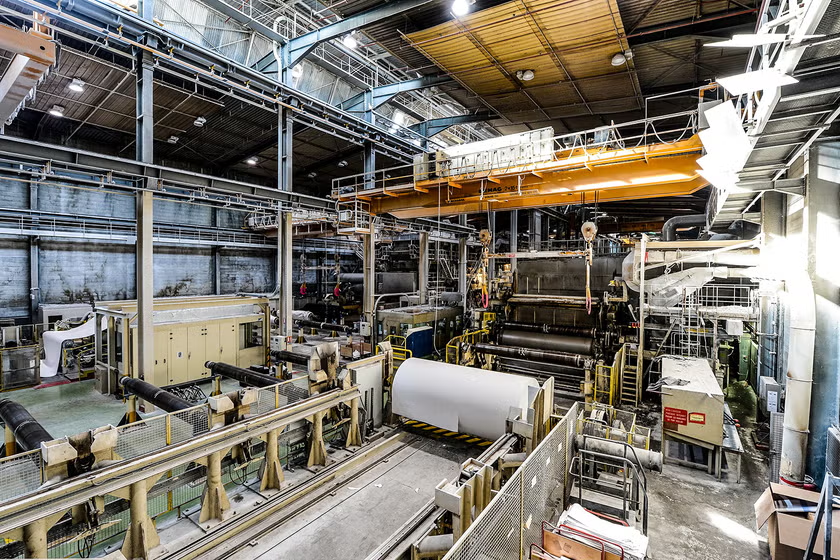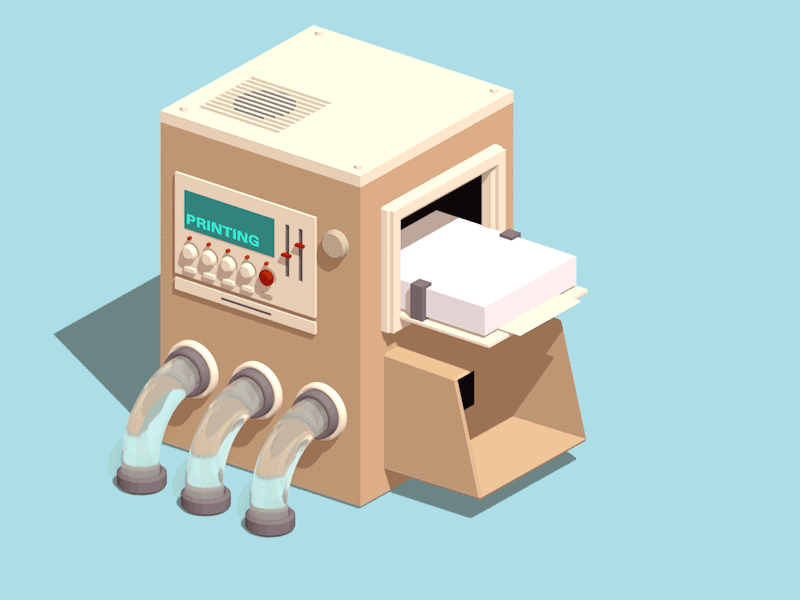In recent decades, the Internet, together with information and communication technologies such as personal computers and mobile phones, has provided an electronic alternative to newspapers and printed materials. Indeed, emails and texts have replaced a substantial amount of traditional written communication, and cloud storage has emerged as a viable alternative to physical documents. Infact, nowadays, payment platforms text us receipts, and college admission decisions are posted online. Banks even charge for monthly statements sent through the mail.
Initial Concerns for the Paper Industry
At first glance, all this attention around the shift toward a paperless environment seemed to spell a bleak future for the paper industry at large. And especially if one considers the rapid evolution of technology and the shifting landscape of consumer behavior.
As a matter of fact, there have been some paper mills worldwide that have struggled to adapt to this shifting landscape and have been compelled to shut down. For instance, last year, Dunn Paper, a specialty paper manufacturer, shuttered its mill in Port Huron, Michigan, after nearly a century of operation. The facility had been a vital supplier of paper products to various industries, including food and healthcare.

Similarly, in March, the packing paper firm Sonoco announced the permanent closure of its Hutchinson Paper Mill, which had been in business for over a century and left over 1,000 mill workers without jobs.
According to data, the annual worldwide production of printing and writing papers has declined by about 30% since its peak in 2007. This further heightens the growing concerns about the industry’s future, which already looms large with uncertainty and potential decline.
The blessing in disguise
The very digitalization that was supposed to sound the death knell for the industry has, in fact, turned out to be a blessing in disguise.
And this blessing arrived as one of digitization’s most significant byproducts: online shopping.
The rise in e-commerce activity, especially during the pandemic saw a huge increase in demand for packaging materials that are expected to top $100 billion by 2027. At the same time, a larger focus on health and safety among consumers brought high demand for tissue products that are expected to reach over $120 billion by 2029. According to United Nations Statistics, the overall production of paper and paperboard has increased by approximately 60% since 1992.
Online shopping, which now accounts for nearly 15% of all sales in the U.S., relies heavily on paper-based products, including cardboard boxes, shipping labels, and packaging materials. While the digital era has indeed reduced the need for some types of paper, it has simultaneously created new opportunities for the paper industry. Companies like Amazon and Alibaba have become key players in this market, driving demand for packaging materials.
Smithers forecasts the market worldwide will expand at a 9.8% CAGR through to 2027, pushing total value to $101.7 billion.
Ongoing demand for paper
Another significant factor contributing to the ongoing demand for paper is the growing global population, which drives demand for essential paper-based products. Items like tissue paper, napkins, tea bags, and disposable cutlery are still in high demand. Burak Aksoy, a research professor at Auburn University’s Forest Products Development Center, notes that “sanitary-type paper is in constant growth.”
This growth is partly fueled by the global push to combat climate change, as the paper industry seeks to replace traditionally plastic-based products, such as straws and bottles, with sustainable paper alternatives.
“There are companies who are making the papers you don’t think about,” says Howell, from the paper museum. “There’s a lot of filter paper that’s being made by companies. But then you even have things like the papers for cigarettes, the papers that show up in your candy bars and hold your Reese’s cup.”
This shift towards online shopping has also spurred investments in cardboard material manufacturing. For example, the first new paper mill in Wisconsin in over three decades, built by Green Bay Packaging, opened in 2021 with a focus on producing materials for cardboard boxes. Similarly, Sappi, a major player in the papermaking industry, is converting a paper machine in Skowhegan, Maine, to produce bleached sulfate board, a sustainable packaging material used in products like coffee cups and cosmetics.
Challenges facing the paper businesses
The changing technology is certainly not the sole factor driving the transformation of the paper industry. Many mills face challenges such as rising operational costs, overcapacity in the industry, and competition from foreign manufacturers. These economic pressures can lead to decisions to close facilities that are no longer financially viable, regardless of the specific paper products they produce.
“You have automation, financialization, globalization,” Hillard explains, emphasizing the interconnected nature of these trends. He notes that a pivotal moment occurred with China’s entry into the World Trade Organization in 2001, which intensified global competition and altered the dynamics of the paper market.
Additionally, the climate crisis poses significant challenges for the paper industry. The production of paper inherently involves the harvesting of trees, which are vital for carbon sequestration. Furthermore, the process of converting pulp into paper is energy-intensive, contributing to the industry’s environmental footprint.
Finding growth through adaptation
“Paper has been around for over 2,000 years, and the fundamentals of papermaking have not really changed during that process,” says Virginia Howell, the director of the Robert C. Williams Museum of Papermaking at Georgia Tech. “When you’re looking at a box that’s made of cardboard, is that the same kind of paper as the paper that is printed in books? Well, yes, it is, but the fibers have been treated in different ways.”
It’s no secret that the paper industry is changing. Contracts, invoices and everyday communication all flow much faster without paper and print magazines, and newspapers have been in decline for years now as consumers switch to online and mobile versions.
All this digitalization and the paperless environments that follow may mean less demand for things like graphic paper and newsprint, but it’s hardly the death knell for the pulp and paper industry. In fact, while the changes have brought challenges to some areas of the industry, the pulp and paper industry has been thriving and will continue to do well into the future. The paper business may evolve, but it’s far from being shredded by the digital age.


